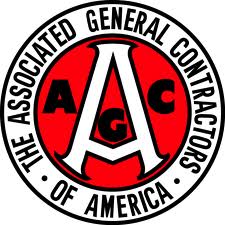Construction spending in May reached the highest level since December 2009 as widespread gains in private nonresidential construction, single-family and multifamily homebuilding more than offset a continuing downturn in public construction, according to an analysis of new federal data released today by the Associated General Contractors of America.
“It is encouraging to see such a broad-based pickup in private construction,” said Ken Simonson, the association’s chief economist. Simonson noted that private nonresidential spending climbed for the third month in a row and was 19% higher than in May 2011. Residential construction surged 3% for the month and 8% year-over-year, with new multifamily construction leaping 6% and 50%, respectively, and single-family homebuilding up 2% and 15%.
The construction economist said that four private nonresidential categories each posted 12-month spending increases of more than 25%: power and energy construction, 35%; hotels, 29%; educational and manufacturing, 27% apiece. There were also improvements in year-over-year totals for private transportation such as trucking and rail facilities, up 17%; health care and commercial (retail, warehouse and farm), 11%; and office construction, 7%.
In contrast, public construction slumped for the fifth consecutive month, falling 4% below the May 2011 level, Simonson noted. He said the largest public category, highway and street construction, slipped 0.5% from April but edged up 2% year-over-year, while the second-largest segment, educational construction, fell 3% and 7%, respectively.
“Based on the number and variety of projects that have been announced in recent months, I expect the private nonresidential sector to keep posting hefty gains for the rest of 2012 and beyond,” Simonson predicted. “Apartment construction seems sure to remain strong as well. Single-family homebuilding is not as solid but has apparently passed its low point. Together, these categories should mean that total construction spending in 2012 will be positive for the year for the first time since 2007 despite ongoing weakness in public construction. +
Related Stories
| Aug 11, 2010
AIA report estimates up to 270,000 construction industry jobs could be created if the American Clean Energy Security Act is passed
With the encouragement of Senate majority leader Harry Reid (D-NV), the American Institute of Architects (AIA) conducted a study to determine how many jobs in the design and construction industry could be created if the American Clean Energy Security Act (H.R. 2454; also known as the Waxman-Markey Bill) is enacted.
| Aug 11, 2010
Architect Michael Graves to be inducted into the N.J. Hall of Fame
Architect Michael Graves of Princeton, N.J., being inducted into the N.J. Hall of Fame.
| Aug 11, 2010
Modest rebound in Architecture Billings Index
Following a drop of nearly three points, the Architecture Billings Index (ABI) nudged up almost two points in February. As a leading economic indicator of construction activity, the ABI reflects the approximate nine to twelve month lag time between architecture billings and construction spending.
| Aug 11, 2010
Architecture firms NBBJ and Chan Krieger Sieniewicz announce merger
NBBJ, a global architecture and design firm, and Chan Krieger Sieniewicz, internationally-known for urban design and architecture excellence, announced a merger of the two firms.
| Aug 11, 2010
Nation's first set of green building model codes and standards announced
The International Code Council (ICC), the American Society of Heating, Refrigerating and Air Conditioning Engineers (ASHRAE), the U.S. Green Building Council (USGBC), and the Illuminating Engineering Society of North America (IES) announce the launch of the International Green Construction Code (IGCC), representing the merger of two national efforts to develop adoptable and enforceable green building codes.
| Aug 11, 2010
David Rockwell unveils set for upcoming Oscar show
The Academy of Motion Picture Arts and Sciences and 82nd Academy Awards® production designer David Rockwell unveiled the set for the upcoming Oscar show.
| Aug 11, 2010
More construction firms likely to perform stimulus-funded work in 2010 as funding expands beyond transportation programs
Stimulus funded infrastructure projects are saving and creating more direct construction jobs than initially estimated, according to a new analysis of federal data released today by the Associated General Contractors of America. The analysis also found that more contractors are likely to perform stimulus funded work this year as work starts on many of the non-transportation projects funded in the initial package.
Museums | Aug 11, 2010
Design guidelines for museums, archives, and art storage facilities
This column diagnoses the three most common moisture challenges with museums, archives, and art storage facilities and provides design guidance on how to avoid them.
| Aug 11, 2010
Broadway-style theater headed to Kentucky
One of Kentucky's largest performing arts venues should open in 2011—that's when construction is expected to wrap up on Eastern Kentucky University's Business & Technology Center for Performing Arts. The 93,000-sf Broadway-caliber theater will seat 2,000 audience members and have a 60×24-foot stage proscenium and a fly loft.








